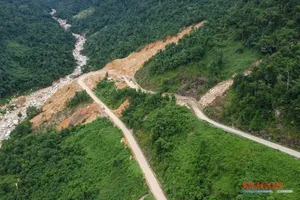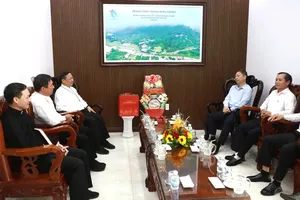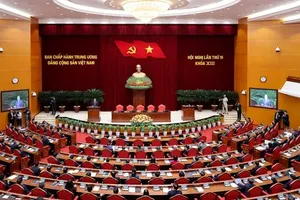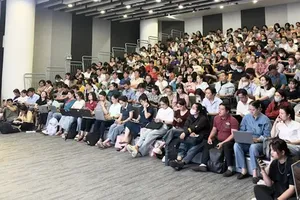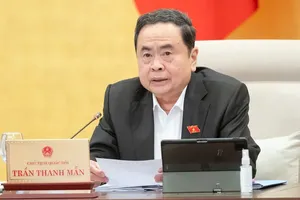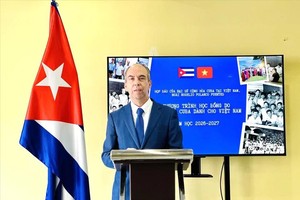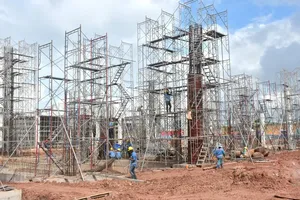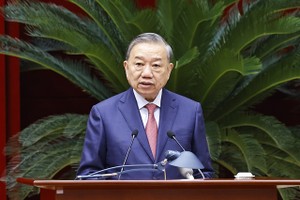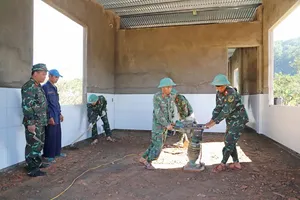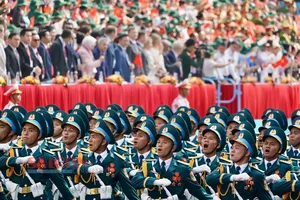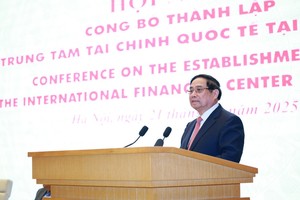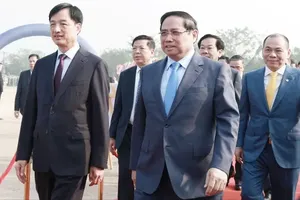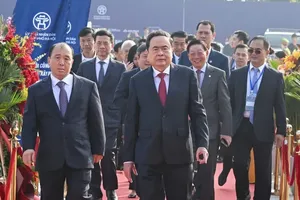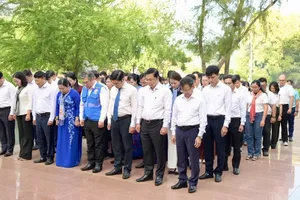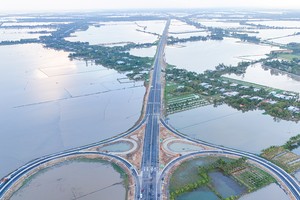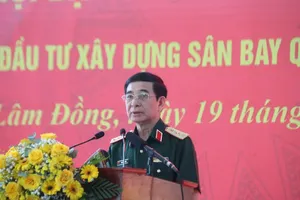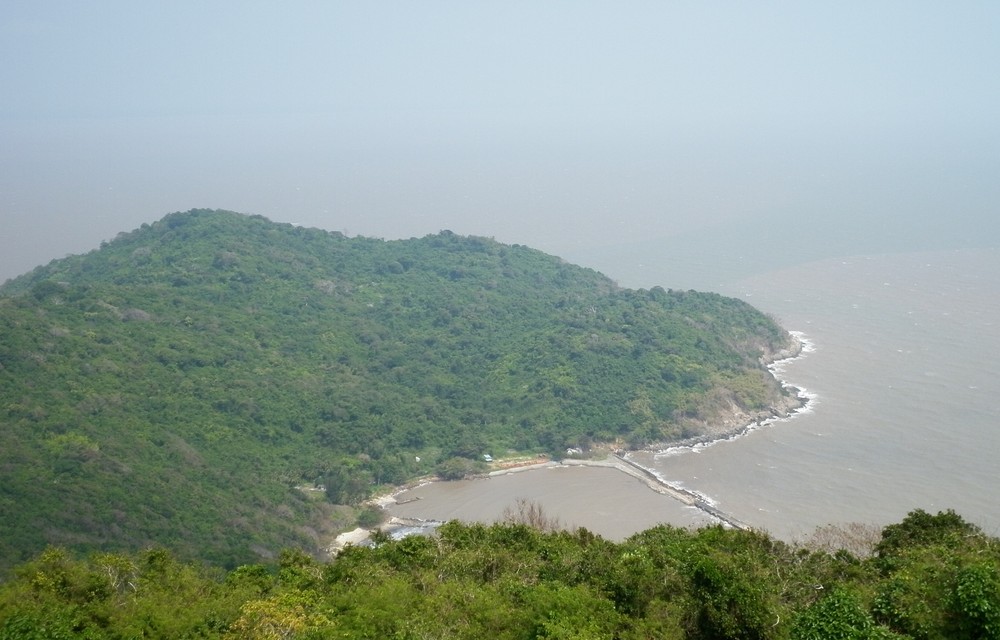
The Mekong Delta region is Vietnam's leading rice, seafood, and fruit exporting region. However, most goods from the region are exported through ports in Ho Chi Minh City and Ba Ria - Vung Tau Province; leading to an increase in logistics costs and product prices; consequently, reducing product competitiveness. Therefore, it is urgent to invest in building a deep-sea port system in the region to serve import-export activities and boost socio-economic development.
For many years, Ca Mau Province has been the leading exporter of seafood (mainly shrimp) in the country, with an annual export turnover of over US$1 billion. Exports to markets in the US, Japan, EU, etc. must all be transported by road to ports in Ho Chi Minh City and Ba Ria - Vung Tau Province before being exported. A seafood processing and exporting enterprise in Ca Mau Province disclosed that the company's export orders are all delivered at ports in Ho Chi Minh City. It takes 7-8 hours to transport goods from the company's warehouse to the port by road; plus, it has to spend money on storage. This affects the business's performance and reduces its competitiveness.
Discussing the socio-economic situation at the seventh session of the 15th National Assembly, Deputy Nguyen Duy Thanh from Ca Mau Province's National Assembly delegation said that according to the Vietnam Logistics Services Business Association, logistics costs are equivalent to around 18 percent of GDP, higher than the world average of 10.6 percent, directly affecting the competitiveness of Vietnamese goods.
The Mekong Delta is a major agricultural and fishery hub of Vietnam. However, logistics costs account for up to 30 percent of the product price of agricultural and fishery products in the region. He pointed out that the poor transport infrastructure and connectivity between seaports, airports, warehouses, and especially deep-sea ports for export container ships are hampering the development of the industry
About 90 percent of the region's goods are transported by road to ports in Ho Chi Minh City and Ba Ria - Vung Tau Province for export. This drives up logistics costs, increases product prices, and reduces the competitiveness of goods from the Mekong Delta.
That’s why the government must invest in the construction of a deep-sea port system in the Mekong Delta region to serve import and export and promote socio-economic development, emphasized Deputy Nguyen Duy Thanh.
According to the Prime Minister’s Decision No. 1579/QD-TTg dated September 22, 2021 on approving the master plan for the development of Vietnam's seaport system 2021-2030, with a vision to 2050, Ca Mau Province will prioritize the development of Hon Khoai Port on Hon Khoai island. Meanwhile, the Prime Minister’s Decision No. 1386/QD-TTg on approving the planning of Ca Mau Province between 2021 and 2030with a vision to 2050 identifies key tasks and breakthroughs such as proactively propose to build appropriate mechanisms and policies to mobilize resources for marine economic development, with a focus on investment in Hon Khoai General Seaport and Nam Can Economic Zone.
According to Deputy Nguyen Duy Thanh, in addition to the marine economic development factor, Hon Khoai also has a particularly important position in national defense and security, considered a forward point in the southern region to guard and protect the country's waters sovereignty. Not only that, Hon Khoai Island is also highly valued by many experts and businesses for its potential to develop marine tourism, capable of attracting foreign tourists, and competing with other tourist destinations in the region. Currently, marine tourism is one of the four main product lines of Vietnamese tourism, prioritized for development according to the Vietnam Tourism Development Strategy until 2030.
However, currently, due to a lack of detailed planning and lack of preferential policy mechanisms, the Hon Khoai port project with an investment capital of about US$2.5 billion is still on paper.
Hence, Deputy Nguyen Duy Thanh requested the National Assembly and the Government to support and guide Ca Mau Province in building a legal framework, creating mechanisms and preferential policies attractive enough to call for private investment. At the same time, he suggested the government’s consideration of partial support from the central budget for public maritime infrastructure projects such as coastal logistics service areas, bridges leading from shore to islands, breakwaters, and shipping channels.
Chairman of Ca Mau Provincial People's Committee Huynh Quoc Viet said that the investment in Hon Khoai General Seaport not only protects national defense and security but also promotes the socio-economic development of the province and the country. Therefore, the government should create favorable conditions and soon attract investment in Hon Khoai General Seaport, Ca Mau Province recommends that the government support the province in building a legal framework and creating a mechanism to call for investment as well as allow businesses investing in the Hon Khoai General Seaport project to enjoy a preferential tax rate of 10 percent within 15 years, corporate income tax exemption for 4 years and a 50 percent reduction in tax payable for the next 9 years according to the law. At the same time, the chairman petitioned for the application of special investment preferential tax rates as prescribed in Clause 1, Article 5, Clause 1, Article 6 and Clause 1, Article 7 according to the Prime Minister’s Decision No. 29/2021/QD-TTg on special investment incentives.
